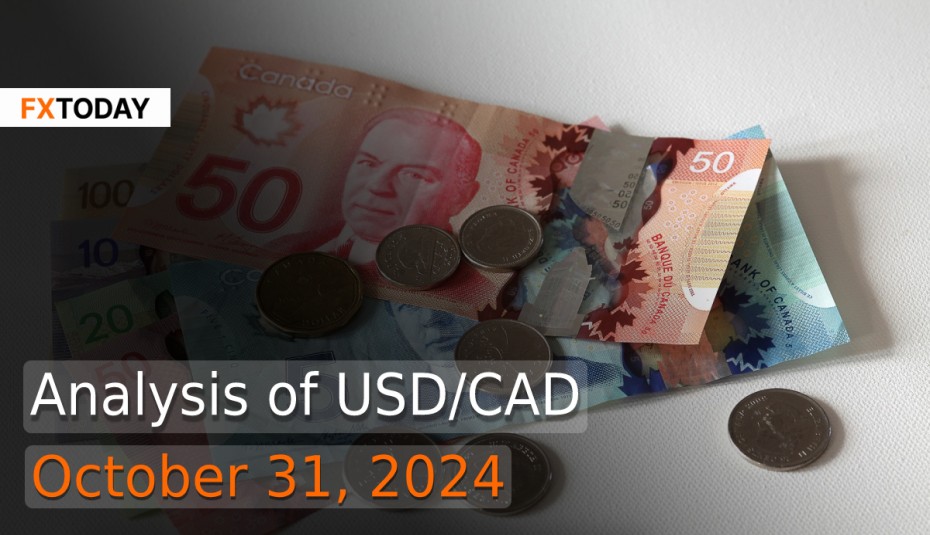BoC's Rate Cuts May Continue Amid Weak GDP and Low Inflation
The Bank of Canada (BoC) has been cutting rates to counter low inflation and stimulate growth, making four consecutive reductions since June. Despite a recent 50-basis-point cut to 3.75%, economists believe the BoC’s growth forecasts remain optimistic, suggesting another rate cut may be needed if GDP data remains weak. Canada’s annual inflation dropped to 1.6% in September, primarily due to falling gasoline prices, reinforcing market bets for further rate reductions.
Consumer spending remains sluggish, with August retail sales increasing just 0.4%, slightly below expectations, signaling that more rate cuts might be necessary. The BoC’s recent rate cuts align with hopes of boosting demand, though concerns over slowing growth persist. The BoC anticipates additional economic data—including GDP, inflation, and job reports—before its next rate decision in December.
The BoC’s economic outlook could also be affected by Canada’s newly announced immigration reduction targets, which aim to ease pressures on housing and social services but may impact labor supply and GDP growth projections. Economists express mixed views, with some warning that the cuts could strain the workforce, especially in key sectors like healthcare and small businesses.
The U.S. dollar reached a three-month high, though it remained steady against other major currencies ahead of next week's U.S. election and key economic data. The dollar's strength is supported by expectations for the Fed’s policy direction, with the dollar on track for its largest monthly gain in 2.5 years.
U.S. job openings in September fell to their lowest since January 2021, as indicated by the JOLTS report, suggesting a cooling labor market. The report showed a decrease to 7.443 million openings, a drop in voluntary resignations, and a rise in layoffs. Consumer confidence rose in October, attributed to improved labor market perceptions, despite election-related uncertainty.
Rising home prices, driven by limited supply and high mortgage rates, continue to deter potential buyers, as elevated rates persist following recent cuts. Fed officials are expected to implement a 25 basis point rate cut next week, following a 50 basis point cut in September. A Reuters poll suggests a similar move in December, shifting the Fed’s primary focus toward labor market support rather than inflation control. As a result, the Canadian dollar may continue fluctuating within its higher range and could weaken further relative to the U.S. dollar for the time being.
Data for Technical Analysis (1D) CFD USD/CAD
Resistance : 1.3930, 1.3942, 1.3960
Support : 1.3894, 1.3882, 1.3864
1D Outlook
Source: TradingView
Buy/Long 1 If the support at the price range 1.3868 - 1.3894 is touched, but the support at 1.3894 cannot be broken, the TP may be set around 1.3932 and the SL around 1.3855, or up to the risk appetite.
Buy/Long 2 If the resistance can be broken at the price range of 1.3930 - 1.3956, TP may be set around 1.3980 and SL around 1.3881, or up to the risk appetite.
Sell/Short 1 If the resistance at the price range 1.3930 - 1.3956 is touched, but the resistance 1.3930 cannot be broken, the TP may be set around 1.3884 and the SL around 1.3969, or up to the risk appetite.
Sell/Short 2 If the support can be broken at the price range of 1.3868 - 1.3894, TP may be set around 1.3836 and SL around 1.3943, or up to the risk appetite.
Pivot Points Oct 31, 2024 08:32AM GMT
|
Name
|
S3
|
S2
|
S1
|
Pivot Points
|
R1
|
R2
|
R3
|
|---|---|---|---|---|---|---|---|
| Classic | 1.3836 | 1.3864 | 1.3884 | 1.3912 | 1.3932 | 1.396 | 1.398 |
| Fibonacci | 1.3864 | 1.3882 | 1.3894 | 1.3912 | 1.393 | 1.3942 | 1.396 |
| Camarilla | 1.389 | 1.3894 | 1.3899 | 1.3912 | 1.3907 | 1.3912 | 1.3916 |
| Woodie's | 1.3832 | 1.3862 | 1.388 | 1.391 | 1.3928 | 1.3958 | 1.3976 |
| DeMark's | - | - | 1.3873 | 1.3907 | 1.3922 | - | - |
Sources: Investing 1, Investing 2
















